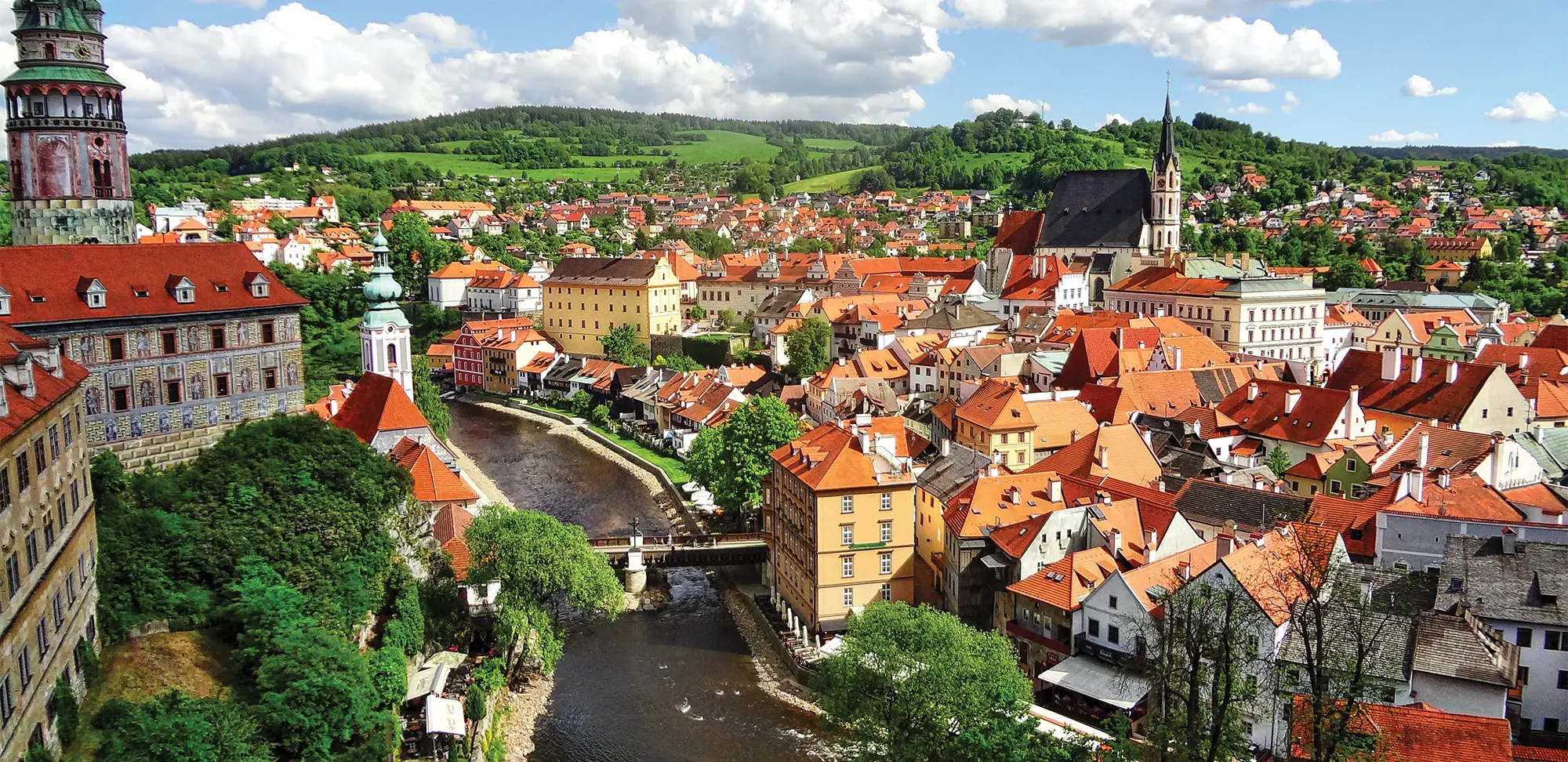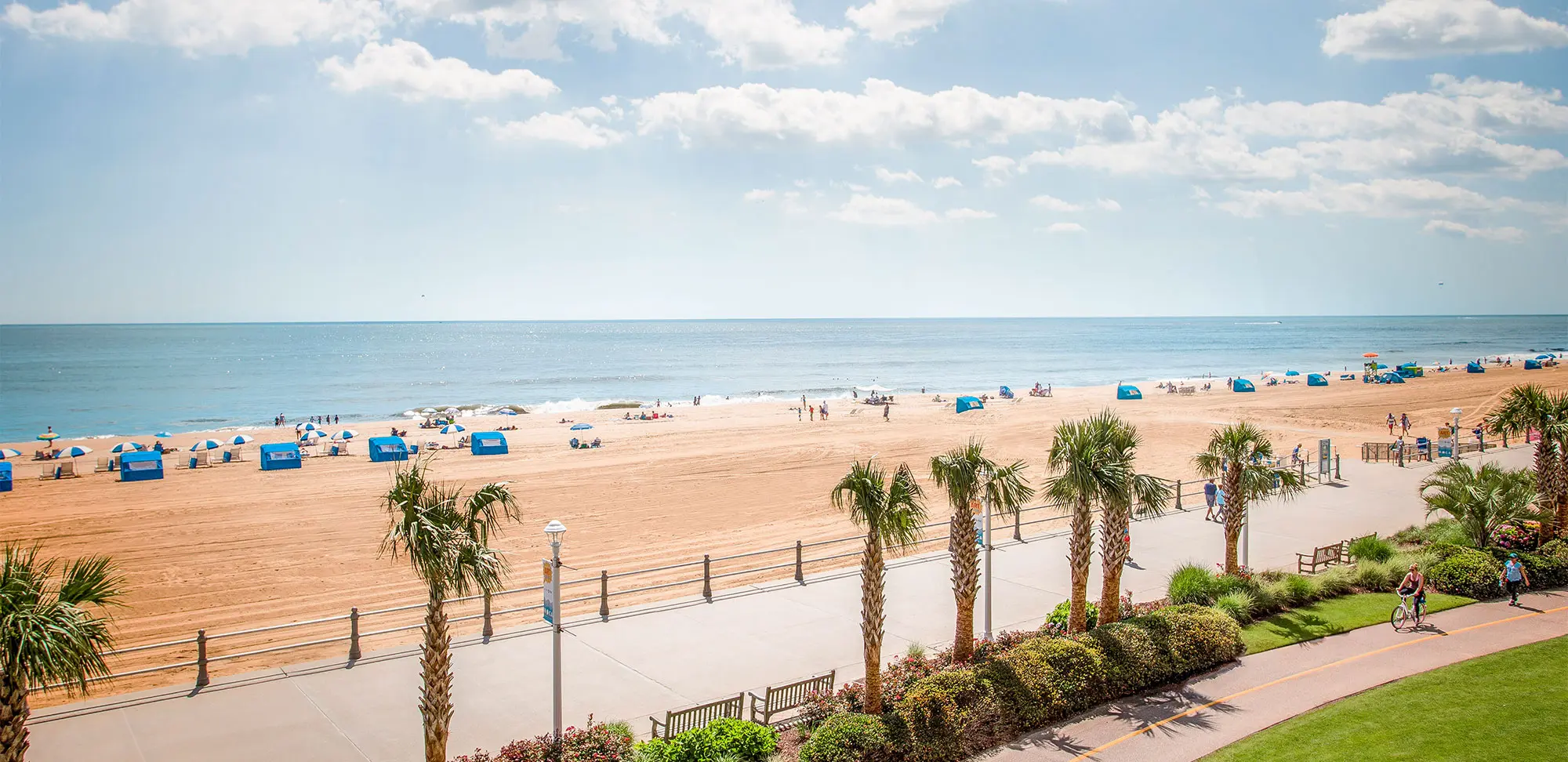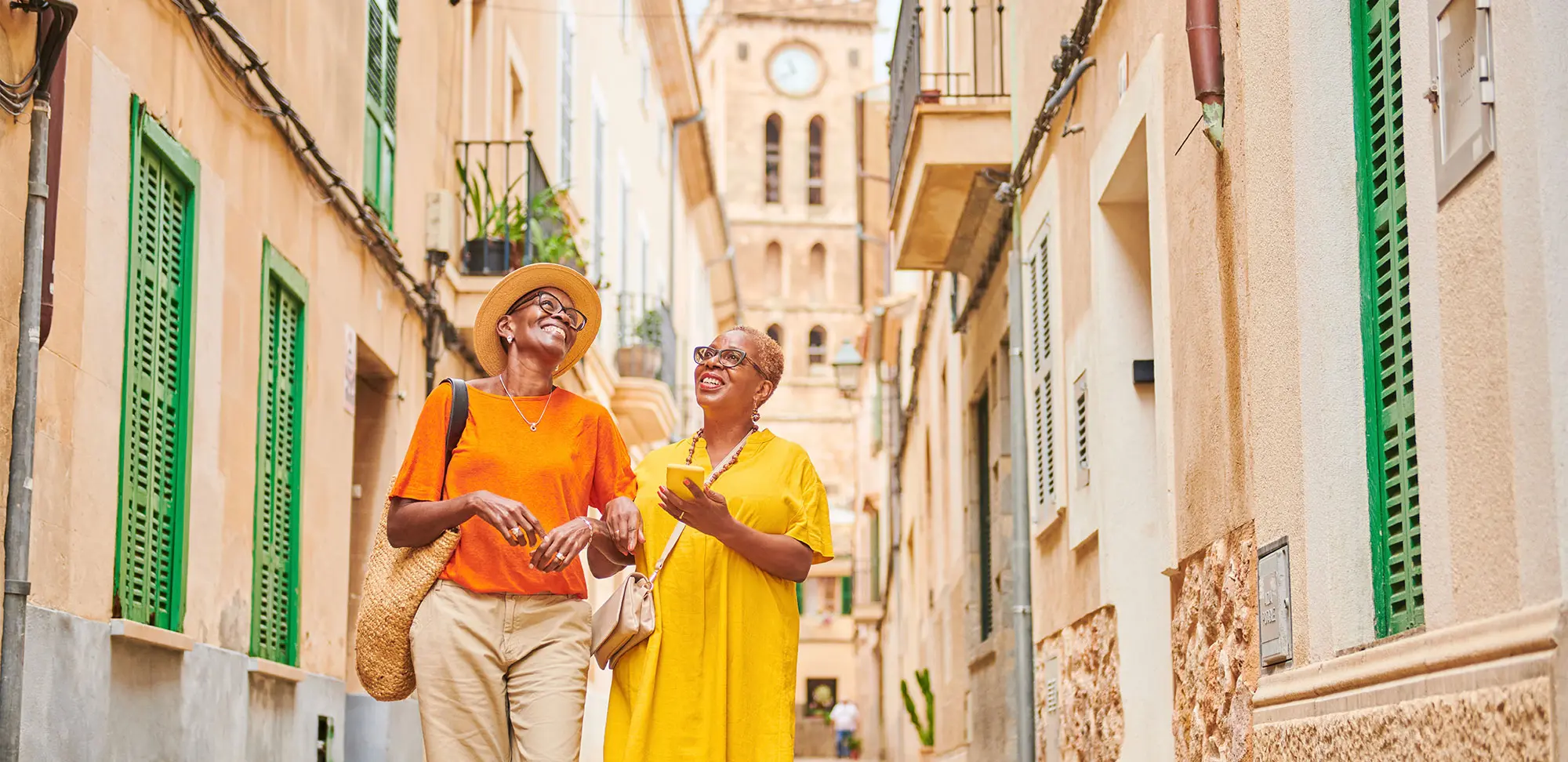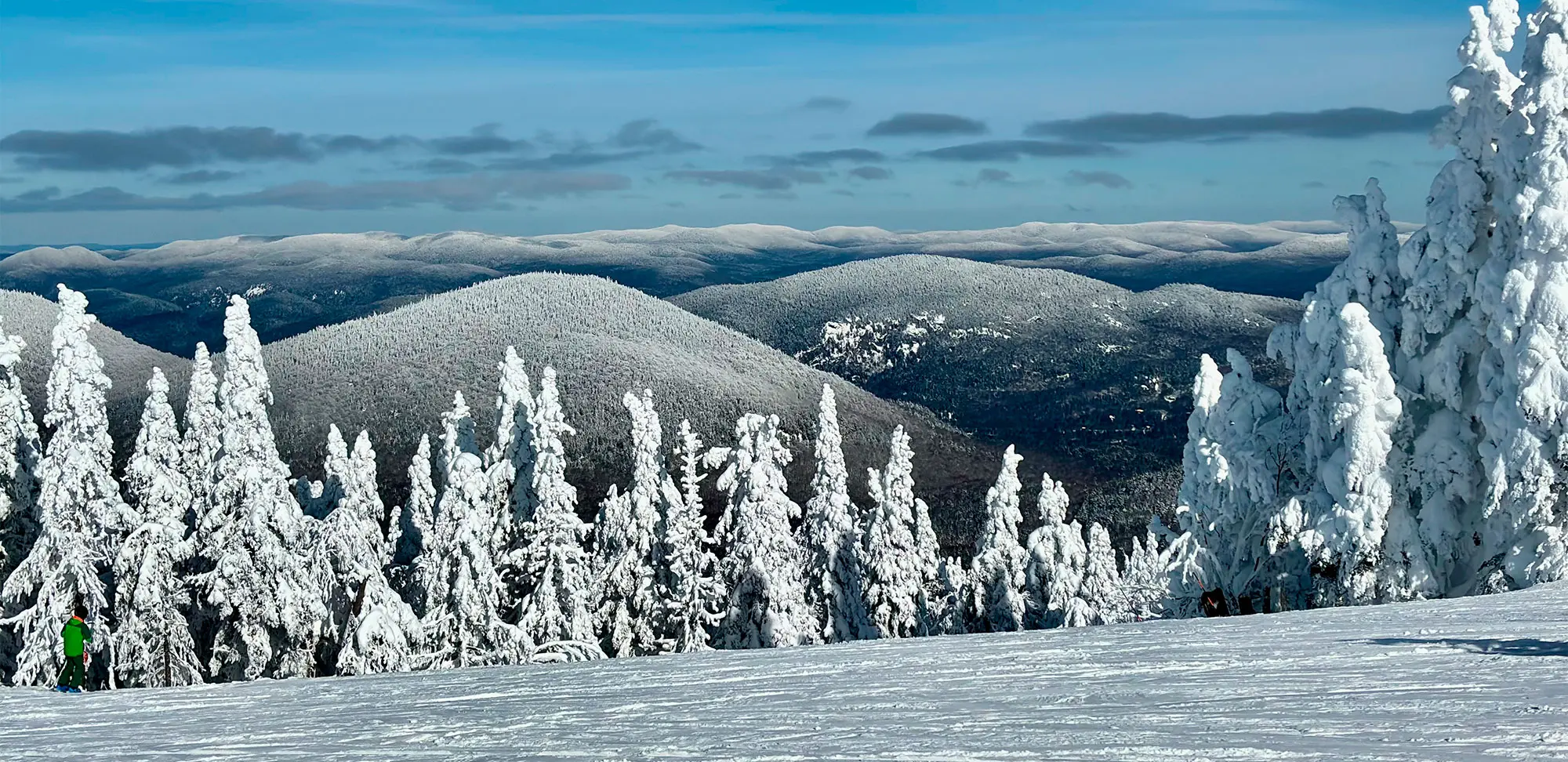Book one of these European hot spots before school breaks, the prices jump, the temperatures rise and the museum queues snake around the block, and enjoy sandy beaches, city promenades, hiking trails, historic landmarks or a cool combination thereof!
Český Krumlov, Czechia
The medieval Czech Republic town of Český Krumlov in South Bohemia delivers 600-year-old streets weaving around incredibly well-preserved Gothic, Renaissance and Baroque buildings. It’s home to one of the most famous chateaus in Europe, complete with 40 buildings, five courtyards — and bears living in the moat.
Extracurricular: Locally, the town is noted for its water sports centred on the Vltava River. Find a rafting experience that matches your skills or opt for an evening boat tour.
Taste to try: This one’s easy: boiled Czech dumplings soaked in pork gravy. Diet be damned. Try to sneak in a taste of the famous Jihočeská Niva blue cheese, too.
Bonus tip: There are a number of excellent small art galleries that aren’t obvious. Google the local entertainment websites for info on current exhibitions.
ckrumlov.info/cz/cesky-krumlov
Porto, Portugal
Easygoing Porto at the mouth of the Douro River is a wonderful jumble of architectural styles, ancient alleyways, colourful tiled townhouses and bright murals, almost everywhere you look. A trading hub for hundreds of years, it’s easy to explore on foot, particularly the Ribeira neighbourhood.
Extracurricular: Head out of town on at least one wine tour. Plan on drinking your way around the Douro Valley, in Peso da Régua or in Vila Nova de Gaia, the hub of the port wine region.
Taste to try: Traditional tascas — affordable eateries that specialize in classic Portuguese cooking — yield grilled sardines, cod croquettes and incredible ham.
Bonus tip: Porto has a number of miradouros, little lookouts that offer incredible vistas. Check out Miradouro da Vitória, Torre dos Clérigos and Jardins do Palácio de Cristal.
Cádiz, Spain
One of Europe’s oldest cities, Cádiz has been a commercial hub for almost a thousand years, and was settled long before that. Its history as a naval base — for ships sailing off to “discover” North America — makes for excellent museum-going. Add in little neighbourhoods to wander through, great restaurants and plenty of acres of sand to stretch out on, and you’ve got a week in heaven.
Extracurricular: Getting your steps in? Easy: Climb the east tower of the Baroque-Neoclassical Catedral de Cádiz for an incredible view.
Taste to try: Pastry shops are everywhere in this town, each with its own specialty. Try the tapas dish tortillitas de camarones — crispy shrimp and chickpea crackers — a regional snack.
Bonus tip: Split your time between the Old City, the Playa de la Victoria strip in the “new” part of town and the secluded beaches a short drive south. They don’t call it the Coast of Light for nothing.
Calvi, Corsica
Summer tourism is the biggest money-maker for Calvi, a town on the northwest coast of the French island of Corsica. The population swings from 5,000 to 50,000 — ergo, you’re visiting spring or fall. Outdoor sports and hiking are main attractions, with the thousand-kilometre shoreline of clear turquoise waters offering great snorkelling and scuba diving.
Extracurricular: Touring the port citadel and people-watching at the beach are must-dos, but try to take a winding drive up the mountains to the villages of Sant’Antonino, Corbara and Pigna.
Taste to try: The charcuterie and cheese here are on another plane. Corsican pork and cured meats like coppa and lonzu are island icons, particularly because the animals are fed on chestnuts. Similarly, the goat’s milk cheeses are out of this world.
Bonus tip: Napoleon famously said that he could smell his homeland before he could see it. He was referring to the maquis: the aromatic herbs and plants — including lavender, rosemary, heather, myrtle, mint and thyme — that grow wild on the hillsides. Look for incredible essential oils in all the shops.
Bodrum, Turkey
Technically not Europe but close enough, Bodrum, in the southwest corner of Turkey, sports a glistening marina, elegant boutiques and gorgeous beaches. Off-season, you get a sense of the jet-set aura here, minus the crowds.
Extracurricular: Once you’re through with the courtyards, gardens and dungeons of the 15th-century Castle of St. Peter, visit the adjacent Museum of Underwater Archaeology. The tombs at the Mausoleum at Halicarnassus date from the fourth century BCE.
Taste to try: While the typical Mediterranean diet rules here, sidestep into a plate of cokertme kebab — marinated veal over fried potatoes with garlic yogurt.
Bonus tip: Bodrum is the gateway to other resort towns farther west. You can even take one of the ferries over to the Greek island of Kos for beach time with a different view.
Galway, Ireland
This university town has a youthful, bohemian vibe yet is firmly anchored to its colourful marine heritage. A favourite of artists, poets and musicians for decades, it’s chock full of busy markets, engaging galleries, great food and all the Irish folk music you can handle.
Extracurricular: Galway is one of the stops on Ireland’s Wild Atlantic Way, a 2,500-kilometre driving route along the west coast from Donegal to Cork.
Taste to try: Cockles and mussels, alive, alive-o! The Galway oysters are the freshest you will ever taste. Fancy mashed potatoes? Yes, colcannon and champ is a hearty dish of potatoes with spring onions, cabbage and herbs.
Bonus tip: The Aran Islands at the mouth of Galway Bay make for a great day trip. Find historical Bronze and Iron Age forts, a 14th-century castle, the scenic Cliffs of Aran, a colony of seals and the secluded Kilmurvey Beach.









